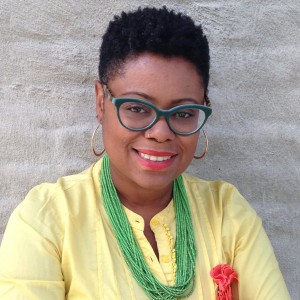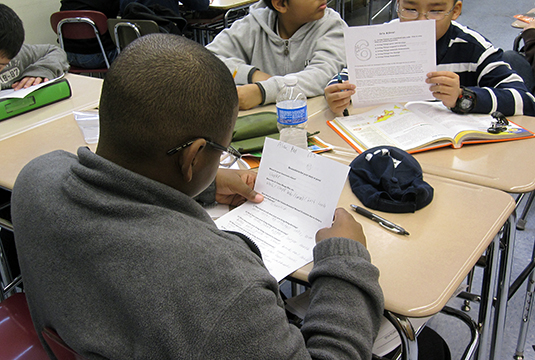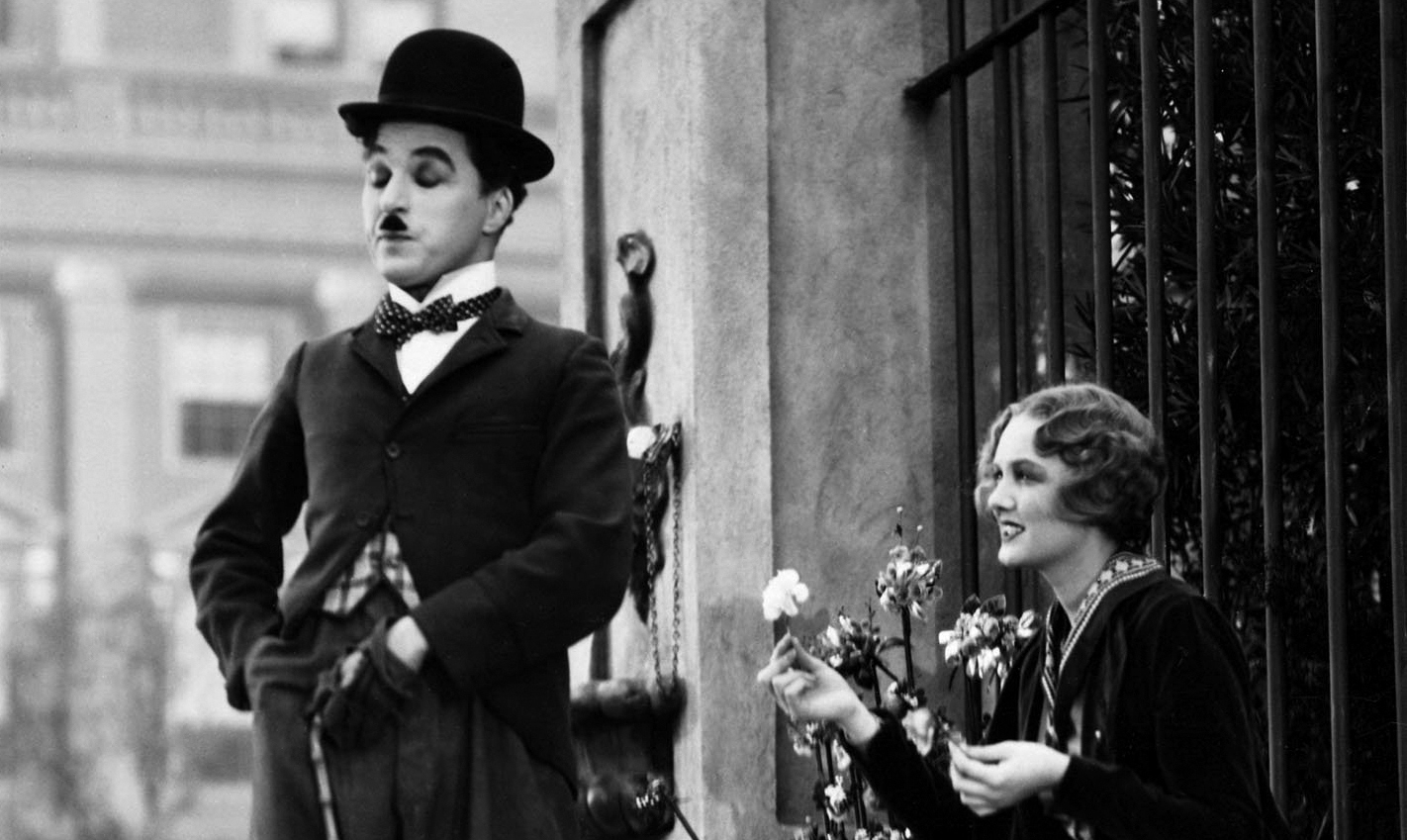This essay about race and books for children and teens was first published on the Reading While White blog.
“I don’t like to read” is a something I hear very often in New York City public schools, which I’ve learned to translate as “I don’t like to read what my teachers make me read.” Which, in fact, does not always mean “I don’t like to read books that don’t reflect my experiences.”
I once asked a class of Brooklyn ninth-graders, many of whom were avid readers, if they’d like to see a Twilight or Harry Potter set in the ‘hood. They all shouted no. I didn’t ask them why. I already knew the answer.
My children’s school has an annual book fair. I have a hand in selecting the titles sold there, and of course, I pick out a range of diverse books that reflect the school’s demographic (there aren’t many such books). I handed a copy of Christopher Grant’s Teenie, with a beautiful black girl on the cover, to a beautiful black girl. She scrunched up her face and shook her head, as if I’d just handed her a plate of chocolate-covered Brussels sprouts. She’d already bought two John Green novels—neither of which had any black girls on the cover, or in them.
As I’m writing this, my almost 11-year-old comes over to announce that she’s just finished reading Edwidge Danticat’s new YA novel, Untwine. She tells me to read it soon so we can discuss. Yesterday, my almost 13-year-old returned Julie Murphy’s Dumplin’ to me. “How was it?” I asked. “It was interesting,” she said. “It’s not as vanilla as the other book. It’s not vanilla at all.”
By vanilla, she means white. Not just white people, but a white feel, a white tone. A book can have only white characters and feel very much not-vanilla—there’s something universal about the voice, the characters, and the themes. She’s probably heard me say this about books. And maybe, in some indirect way, I’ve taught my daughters how to read like this. Because their mother is a children’s book writer, and has to read the canon as part of her job, my daughters are privy to most of the award-winning, bestselling, and even some of the obscure and under-the-radar, children’s books. This sets them apart from their peers, and maybe their ELA teachers, too. I tell them they’re privileged in this sense. They’re little black girls who love to read, and own books, and have parents and grandparents who read. This is their black privilege.
Black privilege includes the art of biculturalism. The very nature of being black and consuming media inundated with the white experience warrants biculturalism. Our Friday Family TV night line-up confirms the range in what we can appreciate—from Blackish (a hit or miss in our house), Fresh off the Boat, and even The Goldbergs (with its many references to black music) to the very vanilla The Middle.
This is how we read. My daughters and I can enjoy Laura Ruby’s Bone Gap for its voice and setting and characters, as much as we can find truth in Renee Watson’s This Side of Home. I’ve been trained to do this all my life as a student, though, without having a Renee Watson or Jackie Woodson to balance out the Shakespeare, William Golding, Stephen Crane, and Nathaniel Hawthorne.
The very first black author I read was Alex Haley. I read Queen in the eleventh grade because Halle Berry starred in the TV adaptation. I discovered the mirror in Alex Haley’s books in a roundabout way—through a Hollywood movie star who looked like me (according to the cute boys in high school). As a result, I discovered a whole world of slave narratives that provided mirrors within mirrors, which allowed me to see the full trajectory of my existence. They were the history lessons I’d never learned in school. Because of Alex Haley, I was able to contextualize nineteenth-century feminism via the Brontë sisters and Charlotte Perkins Gilman. Edgar Allan Poe stories paled in comparison to my understanding of the horrors of slavery. Later, in college, while working in bookstore, I sought out black women poets to better appreciate Emily Dickinson. Not the other way around.
Now, as an adult and a children’s book writer, I can immerse myself in Laini Taylor’s books knowing that while this sort of grandiose mythological world-building is virtually absent in books featuring characters of color, there are still the magical worlds of Wole Sonyika, Gabriel García Márquez, and Toni Morrison that have yet to make their way into YA novels.
YA author Meg Rosoff recently stated that every single book out there in the world can provide narrative context for all marginalized readers. This has been the thinking since the advent of the written mode, and it’s why Beowulf is still taught in high school English classes, even in predominantly black schools. Whiteness and Western mythology as a default narrative was the only way in which colonialism was allowed to take root and spread throughout the world—beginning with, what some could consider, the holiest of all books.
My mother-in-law was an English professor, and I once asked her what she read as a child growing up in Trinidad. She read British classics way before she read any Harlem Renaissance writers. My husband is, and has always been, an avid reader. He actually owned books and made frequent trips to the library growing up in Trinidad and Liberia. He’d never read a book about black boys. Yet, he discovered the magic of story in Frank Herbert’s Dune and in the works of Marion Zimmer Bradley, Isaac Asimov, and Phillip K. Dick. He’d read Octavia Butler without knowing that she was a black woman.
This sort of literary biculturalism is why we have an Octavia Butler (a Ray Bradbury fan) and a Toni Morrison (a William Faulkner fan). An outlier, in this case, would be Zora Neale Hurston, whose literary foundation is within the black southern oral tradition. When there is no precedent for our existence in the world of books, we find a seed of validation within white narratives. It’s not an outright mirror, but tinted windows maybe, out of which we can see our muted, somewhat distorted selves.
What specificity in diversity or literal diversity does is sharpen that reflection. Indeed, every book can and should be a window. This is how we learn about the world. But we are not houses unto ourselves. What exists for my public school students who are reluctant readers or who read below grade level are only mirrors. They look to each other for validations of themselves. They find it in music mostly. Yet, if whiteness remains the default narrative, I can’t help but think that white supremacy has a hand in deciding which mirrors they see. Like a house of mirrors, their reflections can be distorted in order to suit the whims of institutional racism. I think they know this instinctively. Maybe they don’t trust books like they don’t trust standardized tests to accurately measure their brilliance.
There’s a certain truth that only a writer telling her own story can bring. From that deep place of lived experience comes validation—a clear, sharpened focus on the specificity of human existence. What reading widely in children’s and YA literature has taught me is that there is indeed specificity in the white experience. Some of my favorite books are about incest in rural Australia, fairy wars in a modern-day industrial town, a time-traveling homeless man in 1970s Manhattan, and a personified pagoda. With over 3,000 children’s books published each year by white authors, there is room for specificity. My children and I absolutely have to read widely to understand the full spectrum of the human experience. And within the books that feature children and teens of color, we’ll hopefully find validation.
While they were reading Renee Watson’s This Side of Home, my daughters would shout out, “Facts!” As in, Renee was laying down some real truth in that story. Now they can understand how gentrification further marginalizes the people in our neighborhood. And because we’ve read and loved The Hunger Games, we can contextualize how there is a larger system at play—how the Capitol reinforces institutional oppression. Maybe we live in District 11 or 12 and fertile farm land or coal are now hot commodities, so the Capitol residents want to move in.
Bicultural literacy needs to be intentional. It’s intellectual survival, especially in this age of Common Core and high-stakes testing. A queer black boy absolutely needs to see himself within the pages of an empowering picture book, while also making personal connections to Where the Wild Things Are. And hopefully, with some sharp critical-thinking skills, he will gain a better understanding of how and why he is marginalized as a queer black boy in the first place. This is what the Common Core proponents are asking of our students: text-to-self and text-to-world connections.
But when there’s no reflection of the self within any text, then there’s no understanding of the world as a truly validating and safe place. The world becomes cold and dangerous, and readers who don’t see themselves reflected in anything around them imagine themselves to be monsters. So they become apprehensive. They don’t try, they don’t push. And this sort of unrealized potential fails us all.
If you want to make a human being into a monster, deny them, at the cultural level, any reflection of themselves.
—Junot Diaz
Ibi Zoboi's short stories have been anthologized in Dark Matter: Reading the Bones, Haiti Noir edited by Edwidge Danticat, and The Caribbean Writer, among others. She’s received grants in Literature & Writing from the Brooklyn Arts Council and is a winner of the Speculative Literature Foundation Travel Award. Ibi is an MFA student in Writing for Children & Young Adults at Vermont College of Fine Arts.



